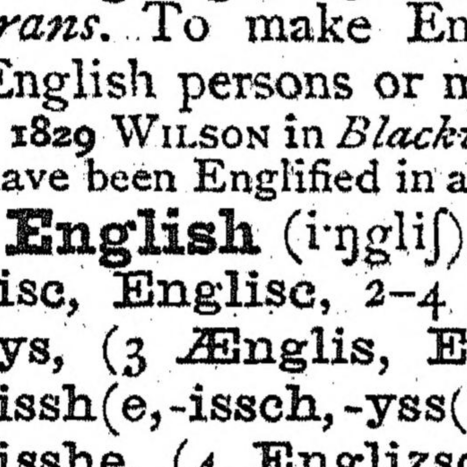The em dash is called the em dash because on old typewriters it was as long as an M. Why do I feel closer to this punctuation mark than the others? It could be partly because I ignored it for so long that it is the last punctuation mark that I got to know, and when I found it, I learned that it could do the work of several other punctuation marks, especially my archrival, the semicolon!
I mean, semicolons have their place. In my opinion, two places: lists within lists can be indicated with semicolons, and when you want to show your English teacher that you were listening in class. That’s about it.
I was taught that if I want to show that two independent clauses (an independent clause is a complete simple sentence) have a stronger connect than just being right next to each other, we can add a semicolon. And then they proceeded to show us examples of full, complex, sentences with semicolons between them. So, they weren’t wrong, but they could have just said that they link two sentences to show a stronger connection–other specific syntactic units have nothing to do with it.
See what I did there? I used an em dash where a semicolon would have been. If you don’t know where it is on your keyboard and your app doesn’t make it automatically when you write a double dash, then a double dash (–) will do fine.
If you are among the continentally-challenged users of English, you may use a single dash ( - ) to achieve the same thing as a double dash. If you use the en dash, leave a space before and after the dash, but not with the em dash.
The em dash can also replace (parenthesis) or commas to set apart a phrase in the middle of a sentence.
“My best friend—the one who moved to Australia last year—just sent me a postcard.”
So, we’ve now replaced the semicolon, parenthesis and commas in at least some of their uses. We’re coming for you now, ellipsis.
The ellipsis (…) does a lot of things: omission, pause, cutting off a sentence part way through, and suspense. The em dash can be used for all but omission. So, if you leave out some text from the middle of a sentence, replace it with an ellipsis, but otherwise, you may want to use the em dash. When constructing an ellipsis, shalt thou count to three, no more, no less. Three shall be the number thou shalt count, and the number of the counting shall be three. Four shalt thou not count, neither count thou two, excepting that thou then proceed to three.
When using an em dash to cut off a sentence, it comes across as a bit more harsh. “If I have to come in there again–” When you want it to kind of trail off more gently, maybe an ellipsis is called for. “But I thought Christie was…”
I’ve seen them replace quotation marks and colons, but that’s not something I do with them.
I would be happy just to have them rid us of the semicolon and Kurt Vonnegut agrees with me. He said, “Here is a lesson in creative writing. First rule: Do not use semicolons… All they do is show you’ve been to college.”
Thoughts?
As a habitual semicolon user, why is the em dash superior?
I find them ugly and unintuitive for people who have not studied them. But I think the real reason is psychological injury from the way I was taught. : ) I’m fine now, just carrying some bias. Hehe.
Imo, it isn’t. Choosing between the semicolon and em dash depends on who your audience is and what impression you’re trying to give them, like using connotation to steer the reader’s emotional response–but with punctuation instead of words. It’s a tool in a toolbox that can do some of the same things as semicolons or ellipses, but the fit might be a little different. Using the best fit tool is up to the writer/crafter.
Here’s an example:
“It’s about time the coffee finished brewing; I’ve been waiting for 15 minutes!”
vs.
“It’s about time the coffee finished brewing–I’ve been waiting for 15 minutes!”
Using the semicolon makes the person complainng about having to wait for coffee sound like a whiner, but the em dash makes it a less serious statement like you’d use to draw someone into small talk.
I agree with the idea that these are choices from the punctuation toolbox, but I’m not feeling any difference in tone in your example. Perhaps this is a regional difference (I’m from the UK)? Does a semi-colon connote greater seriousness than a dash?
Another option would be a colon there:
It’s about time the coffee finished brewing: I’ve been waiting for 15 minutes!
That’s what I’d probably end up writing; more or less serious than a dash?
Could be regional, could be that I’m just a weirdo about punctuation. 😅 The colon reads different to me. It’s not more/less serious than a semicolon or em dash, it just stresses the causality/sequence of the situation. The speaker is impatient for coffee, and it’s because the coffee maker has taken 15 minutes so far to heat water and spit it over a basket of coffee grounds.
Yes, that’s exactly why I’d choose the colon there: the colon points to the second clause as a consequence of sorts.
I feel like the em dash is more serious. And I don’t get a whiny feeling from the semicolon. Outside of academic writing, semicolons just sound pretentious to me. Where are you from? This could be regional.
I’m from the eastern US. You?
Oregon. But I’ve lived outside of the U.S. longer than I lived there. And my granny was from Liverpool.
You’ve proven to me that the em dash is a bit of a Swiss army knife indeed; you didn’t, however, have to diss my boy, the semicolon!
Not only does his design make logical sense for his specific job, but he also takes up no more space than a comma.
Vertically?!
Thank you for this interesting post in praise of the em dash.
When I need it, I myself prefer using an en dash separated with spaces to an em dash without, as I find it more visually appealing – the em dash looks odd to me stuck on the end of a word, and provides fewer options for good word spacing. Does that make me a “continentally-challenged user of English”? If so, which continent?
Also, in this sentence
So, they weren’t wrong, but they could have just said that they link two sentences to show a stronger connection–other specific syntactic units have nothing to do with it.
I’d use a semi colon there:
So, they weren’t wrong, but they could have just said that they link two sentences to show a stronger connection; other specific syntactic units have nothing to do with it.
What’s the motivation for replacing semi colons and ellipses with em dashes? For me, having access to different punctuations, used correctly of course, adds variety to language.
In general, I’m just getting some discussion started.
Continentally-challenged = Britain. I was just having fun. That is the usual style there.
This is all my bias. It does all these things and I think that’s very cool. I was poorly taught the semicolon, so when I learned alternatives, I got excited.
My motivation for replacing everything allowed with em dashes is because they look cool and make intuitive sense to readers of all levels. My motivation for replacing semicolons so much I blame on the psychological impact of the poor way they were taught to me, and finding that many people just kind of skim over them without knowing why they are there.
I still teach my students all the punctuation they will encounter.
I’m British, so, yes, I’m continentally challenged.
There’s no better subject than semi-colons to get a discussion started in an English usage community!
Challenge accepted: Oxford and Cambridge commas!
Ah yes, that too.
I use em dash for “branching out” – and close it with a second one if I want to branch back in, or leave it to a natural closure with a period. I only use semicolon if neither comma nor period feels right.
The m-dash doesn’t really replace any other punctuation–they all have their proper and distinct place.
e.g
The difference between the m-dash in pairs and parentheses is that what’s inside parentheses add additional information that can be ignored altogether in the sentence, whereas m-dash pairs introduce an aside point that relates more closely to the sentence proper."Think of m-dashes in pairs as the opposite of parentheses. Where parentheses indicate that the reader should put less emphasis on the enclosed material, m-dashes indicate that the reader should pay more attention to the material between the dashes. "
Source: https://writingcenter.unc.edu/tips-and-tools/semi-colons-colons-and-dashes/]Don’t be fooled, you just have to delve into the differences that, when you get down to it, aren’t that subtle.
I’m not a fan of advice that says when the writing is more informal to replace the semi-colon or parentheses, etc, with the m-dash, because it seems to be an excuse to not look into the details and be precise with your punctuation.
I can agree with the gist of what you’re saying. They all have distinct uses. However, if you take that too far, the tail starts wagging the dog. Words and context are what should make the distinctions that you ascribe to punctuation. The punctuation is to make it easier to read, and help when pronunciation isn’t there to carry meaning.
With parenthetical phrases it is not always so clear cut that you can decide to use marks to indicate that the reader should pay more or less attention. But you still have to choose one even when it’s arbitrary.
So we teach what the prescriptivists believe applies more cleanly than it does, when in reality there is a lot of overlap where multiple marks could apply. Forcing marks that have explicit meaning where that meaning doesn’t apply changes the meaning of the words.
What I like about the em dash is that it does so much that it allows you to let the words do the talking rather than the punctuation. It’s an approach and a style. Everyone should learn exactly what you are describing and master it. Then explore letting it go when it gets in the way or doesn’t matter.




